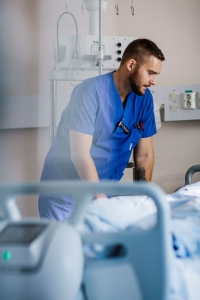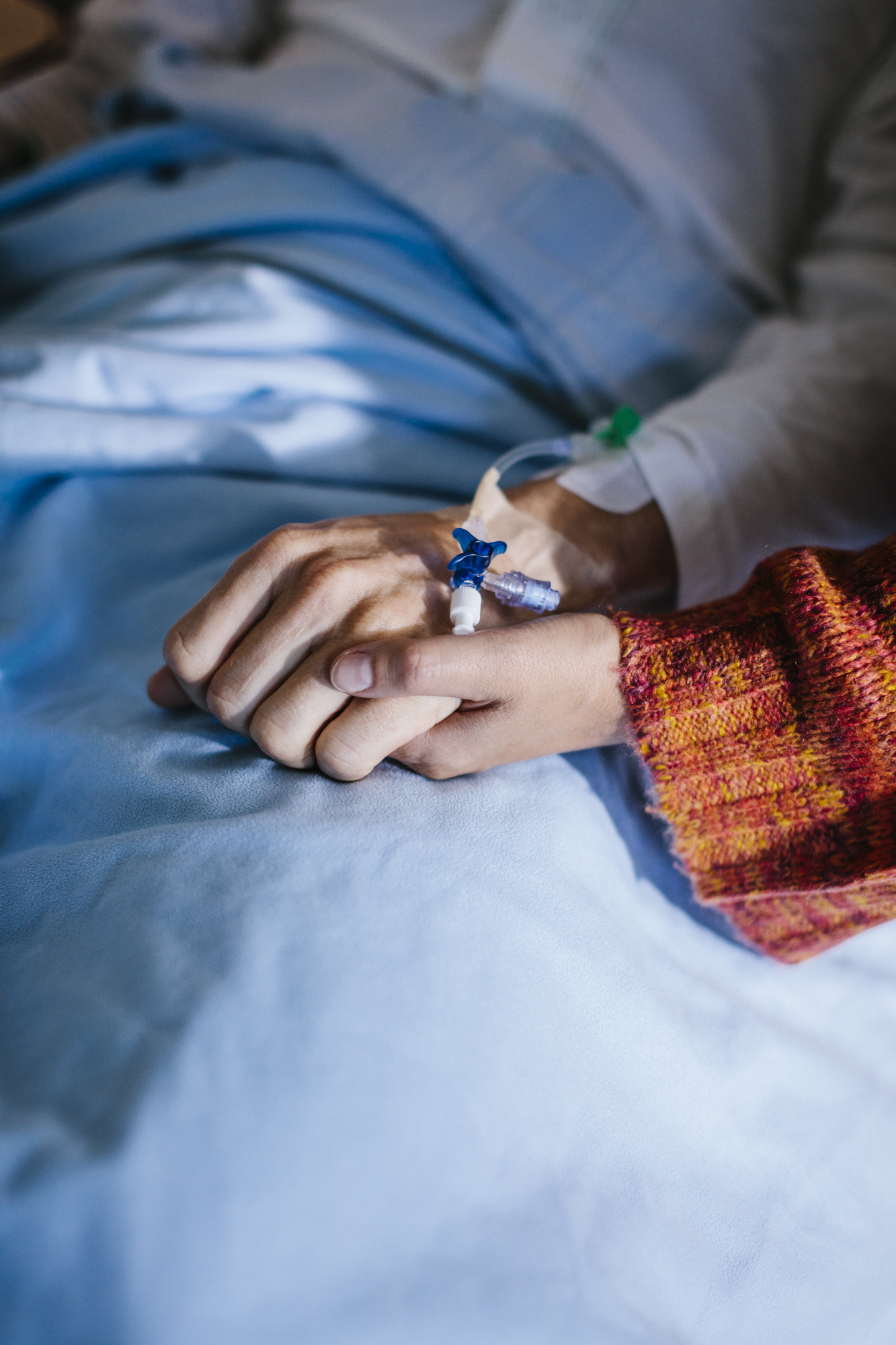Pressure injuries or bedsores?
Preventing pressure injuries
and complications
Many people are familiar with the term bedsores, but today, the correct term is pressure injuries. This change reflects a deeper understanding of how these injuries occur. Pressure injuries don’t only result from lying down; they can develop in any position where pressure and other factors negatively affect the skin and underlying tissues. Let’s clarify the terminology and share tips on effectively preventing pressure injuries in healthcare.
What are pressure injuries?
The term bedsores was once widely used to describe damage to the skin and tissue caused by prolonged pressure, typically associated with bedridden patients.
However, pressure injuries can develop in various ways and on multiple parts of the body, not just areas resting against a surface. They result from a combination of factors, including pressure, shear, poor blood circulation, and moisture. For example, pressure injuries may occur on the sitting bones while seated, on the heels, or from medical devices like oxygen masks.
What causes pressure injuries?
Pressure injuries develop when prolonged pressure restricts blood flow to the skin and underlying tissues, depriving them of oxygen and nutrients. This can lead to tissue damage or necrosis. Key risk factors include:

- Prolonged pressure on specific areas
- Limited mobility or prolonged sitting
- Fragile skin due to age or illness
- Moisture from sweat or incontinence
- Poorly fitted medical aids such as wheelchairs or mattresses
Preventing pressure injuries
Preventing pressure injuries is essential for reducing patient suffering and healthcare costs. These injuries are among the most common healthcare-related conditions and can lead to further complications like infections. Here are some critical strategies:
- Use pressure-relieving aids
Specialized foam or air mattresses and cushions evenly distribute pressure across the body, reducing the risk of ulcers.
- Frequent position changes
Patients with limited mobility should be repositioned regularly to relieve pressure on vulnerable areas like the heels, hips, and back. - Skin care and hygiene
Keep the skin clean and dry to prevent irritation and infection. Use moisturizing creams to strengthen the skin’s barrier function. - Skin monitoring
Regularly inspect the skin to catch early signs of pressure ulcers and intervene before they worsen.
Raising awareness about pressure injuries
While bedsores remains a familiar term for many, spreading awareness about pressure injuries is crucial. Understanding that these injuries can develop in various situations—not just from lying down—helps healthcare providers and caregivers implement better prevention measures and reduce suffering.
With proper knowledge, preventive strategies, and specialized aids, we can significantly improve the quality of life for patients at risk of pressure injuries.
Care of Sweden actively works to reduce the occurrence of pressure ulcers through the use of appropriate knowledge and innovative solutions. Our focus is on providing healthcare with tools and expertise that both prevent and treat pressure ulcers, with the goal of improving healthcare efficiency, enhancing patient safety, and increasing patients’ quality of life by reducing suffering.

